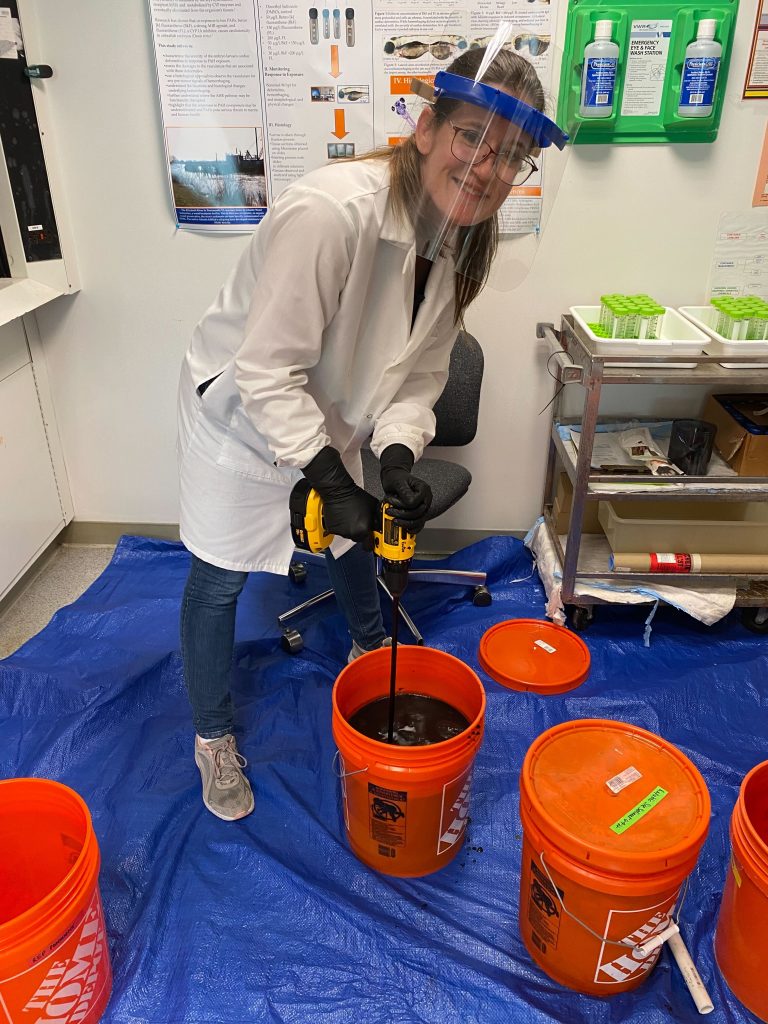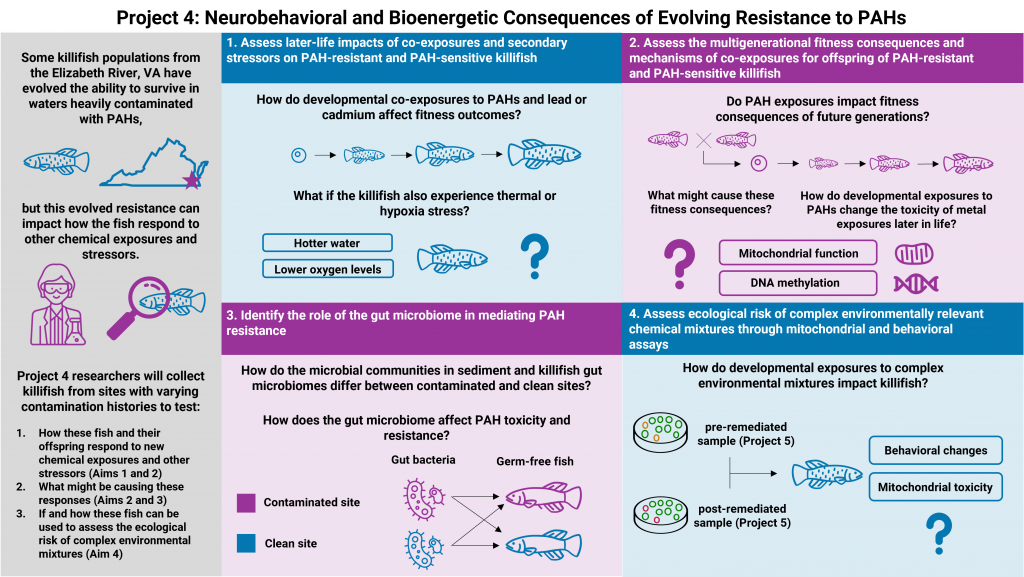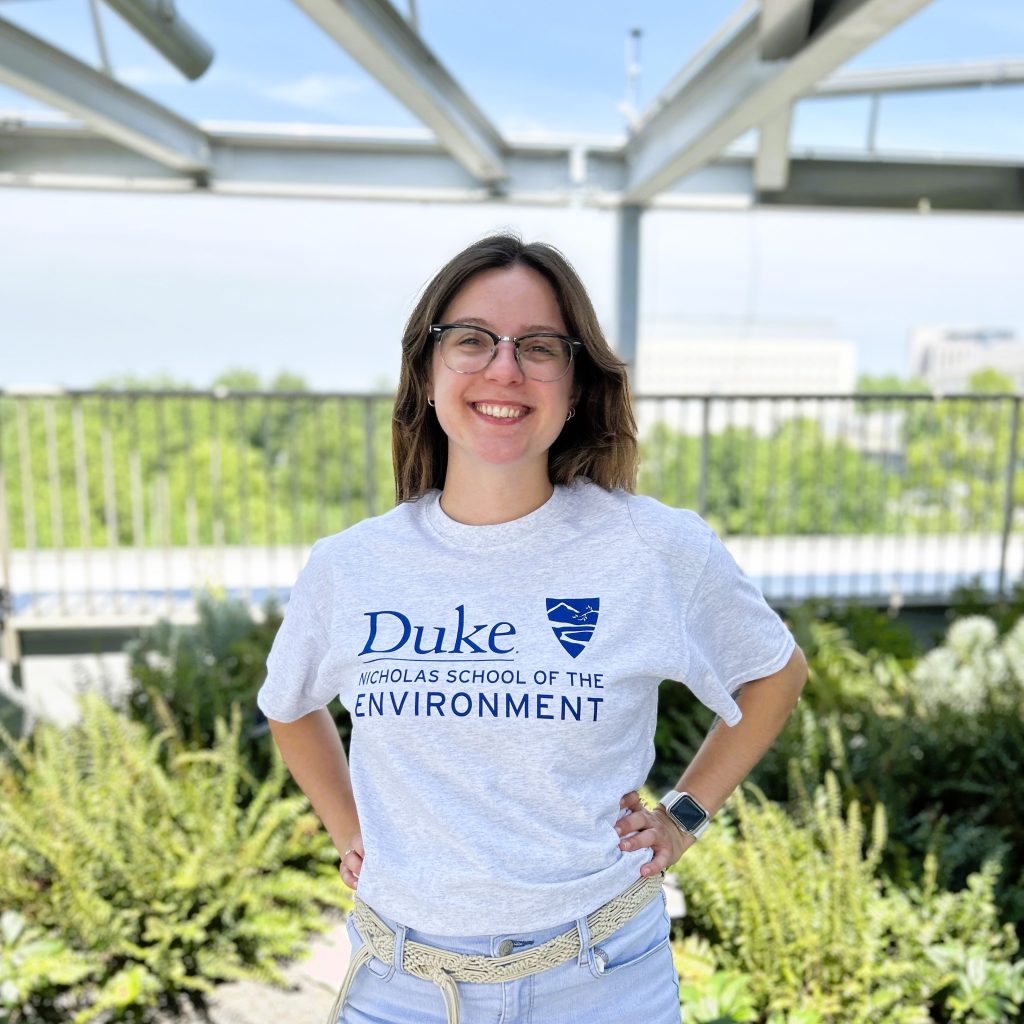Project Leaders
Trainees
Objective and Importance of Research
Evolved resistance to hazardous contaminants has far reaching implications for environmental health, ecological risk assessment, and management and remediation of contaminated sites. However, key knowledge gaps exist in the understanding of the mechanisms of pollution adaptation and fitness consequences, especially when animals are exposed to multiple chemicals. This project will study how polycyclic aromatic hydrocarbons (PAHs) and metals may interact to impact the fitness of Atlantic killifish, how the gut microbiome may affect resistance to PAHs, and how the toxicity analyses of real-world exposures can inform ecological risk assessments.
Novel Aspects of Research
- Assess later life fitness outcomes of developmental co-exposure to PAHs and metals in fish within an evolutionary context.
- Compare fitness outcomes in killifish subpopulations living in PAH-contaminated, PAH and metal contaminated, and cleaned up sites.
- Rear a germ-free fish that enables examination of the role of the gut microbiome in toxicity response to PAHs.
- Develop a higher throughput larval mitochondrial and behavioral assay as an effect directed analysis to examine toxicity of environmental samples and effectiveness of remediation.
Project Aims
- Determine later life fitness consequences of early life simultaneous exposures to PAHs and cadmium (Cd) and lead (Pb).
- Elucidate later life and cross generational fitness consequences of developmental exposures to PAHs and subsequent Cd or Pb exposure and determine links to epigenetic modifications.
- Compare the gut microbiome differences in PAH-resistant and sensitive fish, and elucidate the potential contributions of the gut microbiome on PAH resistance using germ-free killifish studies.
- To develop an ecological-effect directed analysis based on medium-throughput mitochondrial and behavioral assays to assess toxicity of environmental samples including remediated samples derived from Project 5.



PROJECT 4 RECENT PUBLICATIONS
Behrens, J. R., Joyce, A. S., Ferguson, P. L., Kolpin, D. W., Jayasundara, N., Barbo, N., et al. (2025). Integrating contaminant source indicators, water quality measures, and ecotoxicity to characterize contaminant mixtures and per- and polyfluoroalkyl substance (PFAS) variability in an urban watershed. Environmental Science & Technology, doi:10.1021/acs.est.4c14607
Carrothers, S., Trevisan, R., Jayasundara, N., Pelletier, N., Weeks, E., Meyer, J. N., et al. (2025). An epigenetic memory at theCYP1Agene in cancer-resistant, pollution-adapted killifish Cold Spring Harbor Laboratory. doi:10.1101/2024.08.14.607951
Green, E. M., Harishchandra, A., Lickwar, C. R., Kim, Y. J., Rawls, J. F., Di Giulio, R. T., et al. (2025). Environmental microbial cues alter embryonic development and stress responses in vertebrates: Insights from the zebrafish (danio rerio) model. Molecular Ecology, 34(24), e70168. doi:10.1111/mec.70168
Harishchandra, A., Di Giulio, R. T., & Jayasundara, N. (2024). Transcriptomic and methylomic analyses show significant shifts in biosynthetic processes and reduced intrapopulation gene expression variance in PAH-adapted atlantic killifish. Environmental Science & Technology, 58(47), 20859–20872. doi:10.1021/acs.est.4c06845
Project 4 News

Nishad Jayasundara Awarded Named Chair in Global Environmental Health







